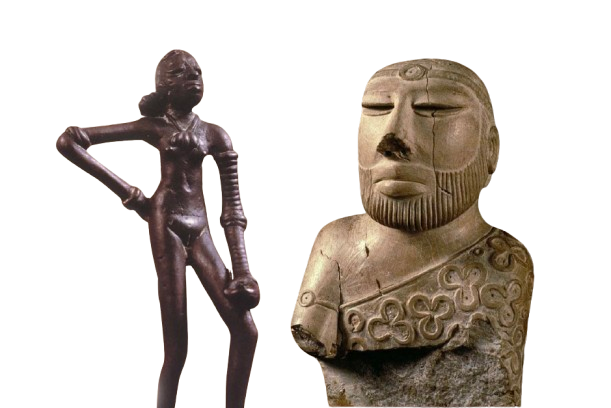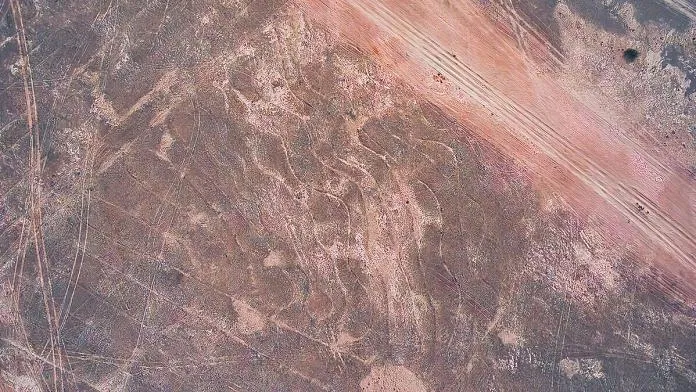Harappa Excavation and Its Impact on South Asian Archaeology
The Harappa site in the Indus Valley Civilization (IVC), was one of the earliest urban societies in history. It thrived between 2600 BCE and 1900 BCE during its mature phase, spanning modern-day Pakistan, northwest India, and parts of Afghanistan. Known for advanced urban planning, architecture, and trade networks, its excavations have transformed the understanding of ancient urbanization and South Asian archaeology.
Discovery of the Harappan Civilization
The first major breakthrough in understanding the Harappan civilization occurred in 1921 when Daya Ram Sahni excavated Harappa in present-day Punjab, Pakistan, under the supervision of Sir John Marshall. A year later, R.D. Banerji discovered Mohenjo-daro in Sindh, Pakistan. These two major urban centers revealed a complex society with sophisticated infrastructure, well-planned streets, advanced drainage systems, and public buildings.
Harappan cities followed a grid system, with standardized brick houses and sanitation provisions. This urban planning demonstrated remarkable engineering skills and an emphasis on public health. These findings highlighted the civilization’s efficient administration and organization over 4,000 years ago.
Major Excavation Sites
Several key Harappan sites have provided insights into the civilization’s social, cultural, and technological advances:
- Mohenjo-Daro (Sindh, Pakistan): One of the largest Harappan cities, known for the Great Bath, a watertight structure likely used for ritual bathing. The city’s drainage system and multi-storied houses indicate a highly developed urban environment.
- Harappa (Punjab, Pakistan): This site gave the civilization its name. Excavations revealed large granaries, public wells, and seals with the mysterious Harappan script, indicating a centralized economy and trade network.
- Dholavira (Gujarat, India): Known for its advanced water management systems, including reservoirs and step wells. The city had distinct sections for administration, the middle class, and lower-class residents, showcasing a structured urban hierarchy.
- Rakhigarhi (Haryana, India): One of the largest Harappan sites, providing insights into agricultural practices, architecture, and material culture. DNA studies from this site have contributed to debates about Harappan ancestry.
Artifacts and Cultural Legacy
Excavations have uncovered numerous artifacts reflecting Harappan craftsmanship and technological skills. Seals, often depicting animals and mythical creatures, suggest a well-developed trade system. The undeciphered script on seals, pottery, and objects remains a mystery, preventing a full understanding of their administrative, religious, and social life.
Other significant discoveries include terracotta figurines, bead jewelry, and metal tools, showcasing artistic excellence. Evidence of trade with Mesopotamia, seen in the exchange of goods, highlights the civilization’s commercial reach.
Urban Planning and Architecture
Harappan cities featured grid-pattern streets intersecting at right angles. Standardized bricks indicate regulation across settlements. Many houses had private wells, bathrooms, and access to an elaborate drainage system connected to large covered sewers—an impressive feat for ancient societies.
The Great Bath at Mohenjo-daro, likely used for ceremonial purposes, featured watertight bricks and bitumen lining, reflecting advanced engineering. Granaries and warehouses suggest centralized food storage and distribution, supporting large populations.
Challenges and Mysteries
Many aspects of the Harappan civilization remain unclear. The undeciphered script is the greatest obstacle to understanding their society. Scholars have found inscriptions on seals and pottery, but without a breakthrough similar to the Rosetta Stone, their language remains unknown.
The civilization’s decline around 1900 BCE is another mystery. Possible explanations include environmental changes like the drying of the Ghaggar-Hakra River (often linked to the mythical Saraswati River), trade route shifts, invasions, or internal social upheaval. Excavations continue to provide clues, but no definitive answer has emerged.
Conclusion: The Enduring Legacy of Harappan Excavation
Harappan discoveries have greatly enriched the understanding of early urban societies. The civilization’s city planning, water management, and trade networks highlight its achievements. Ongoing excavations and advancing technologies hold the potential for new breakthroughs, particularly if the Harappan script is deciphered.
The Harappan civilization remains a cornerstone of South Asian archaeology, offering invaluable insights into ancient technology, trade, and urbanization. Its legacy continues to inspire scholars and archaeologists, shedding light on the ingenuity of early civilizations.



